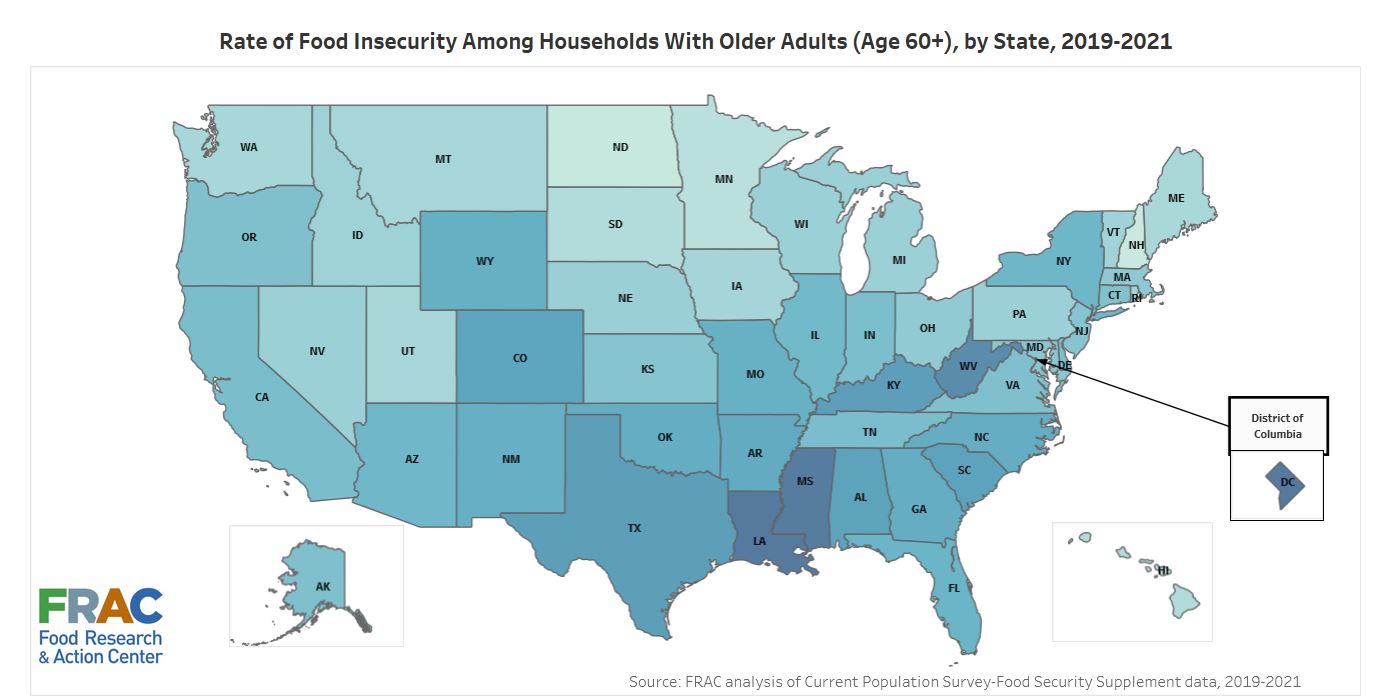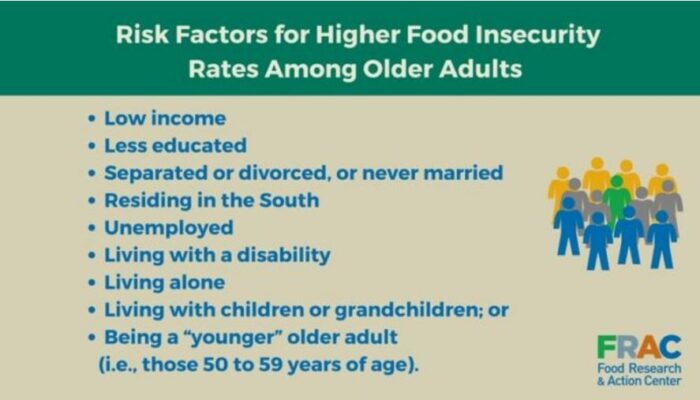May 19, 2023
In recognition of Older Americans Month this May, the Food Research & Action Center is releasing a blog on food insecurity among older adults. The blog focuses on food insecurity’s prevalence and risk factors that make older adults more likely to experience food insecurity.
The theme for May’s Older Americans Month is Aging Unbound, which offers an opportunity to explore diverse aging experiences and discuss how communities can combat stereotypes.

One experience that no older adult should face is food insecurity. Yet, millions of older adults struggle to put food on the table, undercutting their nutrition, health, and well-being, and ultimately their ability to thrive during what many perceive as the golden years.
All levels of food insecurity are detrimental to the physical and mental health of older adults. Even marginal food security is associated with increased risk of metabolic disease among all adults, as well as with less healthy diets among older adults.

Food insecurity among older adults is often invisible because sharing one’s struggles can be stigmatizing, but millions of older adults in every community are harmed by it.
In 2021, 8.2 percent (or 5.1 million) households with an older adult, age 60 and older, were food insecure. [i] Food insecurity impacts households with adults ages 60 and older in every community, with rates ranging from a low of 3.7 percent in New Hampshire to a high of 13.7 percent in Louisiana.

Check out the food insecurity rate for older adults in your state: https://frac.org/hunger-poverty-america/senior-hunger#FImap
While food insecurity rates among older adults are lower than the rate of 10.2 percent for all households across the U.S., certain groups of older adults are more at risk of food insecurity. Research shows the major risk factors for higher food insecurity rates among older adults.

Long before the COVID-19 pandemic, food insecurity rates disproportionately harmed Black and Latinx households with older adults compared to White households. These disproportionate rates of food insecurity are driven by underlying structural discrimination and other inequities, which must be acknowledged and addressed in order to solve food insecurity among older adults.

In honor of Older Americans Month, advocates should all take a moment to reflect on what stereotypes or barriers — either personal or structural — may get in the way of addressing hunger among older adults. Start by recognizing the extent of food insecurity among older adults, who may be at risk, and its devastating consequences to health and well-being.
[1]FRAC analysis of the Current Population Survey Food Security Supplement 2021 data.


